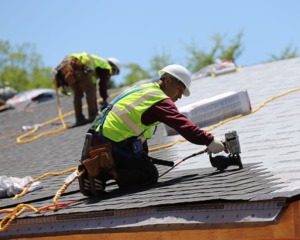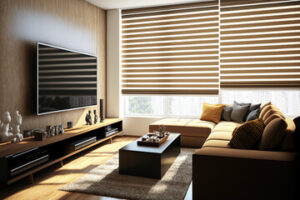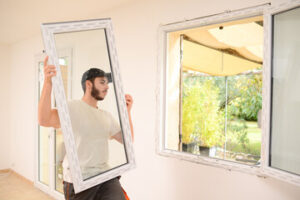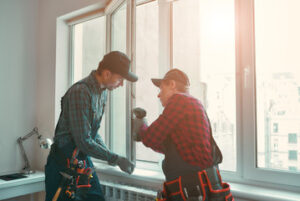Metal Roofing Erie PA adds long-term value to your home or building and helps save on energy costs. Proper care and maintenance will help prevent costly repairs or replacement down the road.
Metal roofs come in a variety of styles, each requiring different maintenance techniques. Inspecting regularly will catch any problems before they turn into major issues, such as rusted seams or loose fasteners.

Metal roofs are considered one of the most energy efficient roofing systems available. This is primarily because of the way they reflect solar radiation instead of absorbing it, which significantly reduces home cooling costs during the summer. In addition, they don’t trap heat like asphalt shingles do, which can contribute to high energy bills throughout the year.
If you’re interested in maximizing your metal roof’s energy efficiency, you can choose to have your roof coated with reflective paint that can lower attic temperatures. The coatings used for this purpose contain infrared-reflective pigments, which effectively reduce heat gain by reflecting it into the invisible spectrum. They also have emissive properties, meaning they release heat into the atmosphere more quickly than other roof materials.
Additionally, metal roofs are made from recycled materials and can be fully recycled at the end of their lifespan. This helps reduce the demand for raw materials and minimizes waste in landfills. In fact, metal roofs have a higher recycling rate than any other roofing material, including asphalt shingles, which typically have a very low recycle rate.
Another important consideration is that metal roofs are fire-resistant. The atomic structure of metals is designed to disperse heat rapidly, which can protect your home from flames and smoke. This is a significant benefit to consider, especially if you live in an area with high fire risk.
Metal roofs come in a variety of styles to complement any architectural design. For example, a weathered copper look might work well with a historic home, while a sleek black finish would enhance a modern structure.
You can also increase your metal roof’s energy efficiency by using underlayment that increases airspace beneath the roofing system. This increases the roof’s ability to emit heat, which helps prevent heat accumulation and promotes more efficient temperature regulation in living spaces. These upgrades are particularly important for homes in hot climates, where the energy cost of air conditioning can be high. They can also help you qualify for a rebate from your utility company, which is often based on the energy-saving capabilities of your roofing system.
Durability
Besides being energy efficient, metal roofs are also extremely durable. They can withstand harsh weather conditions like high winds, heavy snowfall and intense rainstorms better than other roofing types. They can also resist corrosion, especially if the type of metal is galvanized or coated with a protective layer such as Kynar 500 painted finish.
The durability of metal roofs is further enhanced by the fact that they tend to weigh less than asphalt shingles and are designed with fasteners that are anchored to the deck rather than penetrating into the actual roof structure. This reduces the stress on the fasteners and prevents water leaks and metal fatigue that can impact the lifespan of a roof.
While the longevity of a metal roof depends on factors like local climate and proper maintenance, it can typically last up to 50 years or more when installed correctly. Depending on the type of metal used, it may last even longer. For example, copper roofs can last for 200 years or more if properly maintained and protected from oxidation. Standing seam metal roofs offer even more durability than corrugated or screw-down panels. They can withstand extreme weather conditions such as heavy hail or strong winds, and they are less susceptible to ice damming than other roofing types.
Metal roofs are available in a wide range of materials and finishes, from traditional corrugated tin to modern aluminum, zinc, and stainless steel options. They can be coated with a reflective surface to enhance their energy efficiency, and they are often painted with an attractive color that is protected against fading by sun exposure, oxygen, humidity, and temperature changes.
One of the biggest concerns for homeowners considering a metal roof is its upfront cost, which can be a deterrent if they are not prepared to make the investment. However, by exploring financing options or seeking out rebates and incentives, they can significantly mitigate the upfront investment and potentially save money on long-term maintenance and energy bills. In addition, homeowners can also consider purchasing a used metal roof or a refurbished version from a reputable roofing supplier to reduce the initial investment.
Aesthetics
Metal roofing is a transformative roof system that elevates the visual aesthetic of any building. A broad spectrum of color options, from earthy tones to vibrant hues, allows homeowners to customize their roofing with a design that perfectly complements the architectural style of their home or business. Additionally, textured finishes and paint coatings enable further customization, enabling roofs to take on a matte, glossy, or weathered appearance. With so many possibilities, metal roofs become a canvas for personal expression and a unique way to enhance the curb appeal of any structure.
Modern architectural trends favor clean lines and minimalist aesthetics, and metal roofing is a natural fit for this style. Standing seam metal roofs, in particular, feature narrow seams and smooth surfaces that accentuate the clean lines of modern homes. Additionally, insulated metal roofing offers excellent energy efficiency, reflecting sunlight to reduce heat absorption and energy costs.
For those who prefer a more traditional aesthetic, a standing seam metal roof can be designed with a steep slope and a variety of design features to add character and depth to the roofline. For example, dormers can be incorporated into the metal roof, enhancing the home’s visual appeal and increasing usable space. Additionally, skylights can be installed, bringing in natural light and adding an attractive visual element to the roofline.
Aesthetic versatility also makes metal roofing ideal for blending modern and traditional elements, especially in areas prone to extreme weather conditions. Energy-efficient metal roofs with reflective colors and coatings help lower energy consumption and utility costs, making them a popular choice for eco-conscious customers.
Similarly, textured metal roofs are an excellent choice for commercial buildings with a rustic or rustic-inspired aesthetic. The ribbed or patterned design of these roofs helps create a dynamic and visually appealing facade, blending the best of both worlds for a beautiful, long-lasting roof that protects and elevates the style of a structure.
A great-looking roof is an important selling point for any home, and a metal roof has the potential to dramatically boost a property’s value. Whether homeowners are looking for the sleek, contemporary look of hidden fastener panels or the classic beauty of standing seam metal roofs, there is a metal roofing option to suit every taste.
Maintenance
A metal roof can be a major investment for homeowners, and as such, it requires the proper maintenance to perform and look its best. Following annual maintenance recommendations will extend your metal roof’s lifespan and help to prevent significant problems down the road.
Regular cleaning is an important part of metal roof maintenance. A clean and shiny surface is better able to reflect sunlight and repel water, which can help prevent rust and other damage.
Cleaning can also include removing leaves, twigs, and other debris, as well as scrubbing away algae and mildew. It is important to use a soft-bristle brush or low-pressure washer in order to avoid scratching the surface of your metal roofing.
A good time to do this is twice a year, especially after severe weather. The debris and dirt that builds up on your roof can scratch or stain the paint, leading to expensive repairs.
Another aspect of maintenance is to check your gutters and drains regularly for blockages and clogs. These can lead to water pooling on your roof, which can cause structural damage.
Leaks are a common problem with metal roofs, and addressing them promptly can help to avoid costly and destructive mold growth and leaks inside your home. A professional should always inspect a leaky metal roof to determine the source of the problem.
Although metal roofs are very durable, they can still be punctured by falling objects and debris. Regular inspections can ensure that all panels are securely attached and can withstand thermal expansion. A professional can also check the fasteners to make sure they are not crooked, loose, or angled, which can lead to gaps where moisture can seep in.
A metal roof is an attractive addition to any home, and it can enhance curb appeal and add value. It is important to keep in mind that the appearance of your roof will have a direct impact on the first impression that guests have of your house. Repainting your metal roof can make it more appealing and brighten the overall look of your property.



